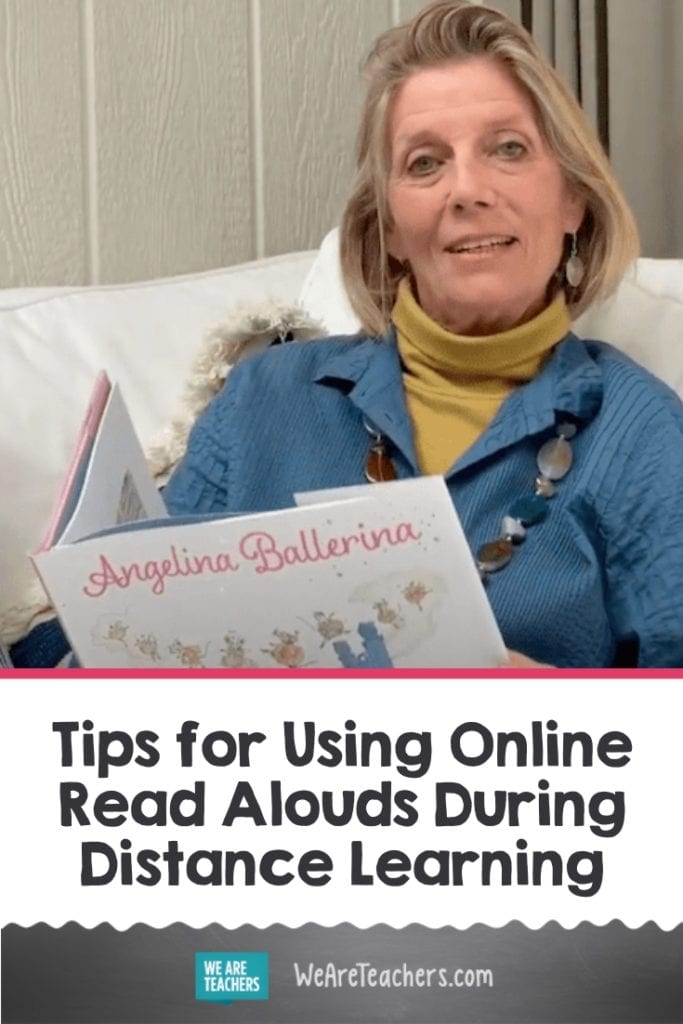This year, with more and more districts starting the year with virtual learning , read alouds may seem like a thing of the past. Not true! In fact, it can be one of the most important parts of a child’s day—especially if you introduce readings by authors, librarians, and celebrities. Here are four reasons to use video read alouds along with ways to make sure online read alouds become more than screen time.
Psst…here’s a list of some of our favorite online read alouds.
Why use online read alouds?
Yes, teachers and librarians agree—there’s no substitute for a book, a teacher, and a class. But, online read alouds provide some real perks:
1. Confidence
Parents who don’t feel confident reading aloud (perhaps they worry about their reading ability or speak a language other than English at home) can watch a video read aloud along with their child. This allows them to share the story and experience it in a way that might not happen otherwise.
2. Flexibility
We all know those kids who like (or need) to hear books read and reread to really understand the literal and deeper meanings. YouTube read alouds allow kids to control how many times they “read” a story, even how often they listen to a specific part. This is a great way to get those repeated reads in, with the child in charge. Then, use instruction time to talk about the story itself.
[contextly_auto_sidebar]
3. Access
We know that when kids have access to books at home, they do better. While online read alouds aren’t books-in-hand, the stories are the same. It’s also important for kids to gain the background knowledge from nonfiction read alouds, or learning about the characters and plots in stories in fiction read alouds. Which leads us to …
4. Shared experiences
When you come back to school, or log in to a virtual classroom again, kids will have the same exposure to stories and information, whether they’ve read the hardcover or seen the video version.
How to use online read alouds to build reading skills
Online read alouds can be viewed in class, assigned via an online platform, or watched together in a virtual classroom. However you use them, the goal is the same: build important reading skills through reading aloud. These include strengthening vocabulary, comprehension, and background knowledge. Here’s how to maximize those skills:
1. Set ground rules
Just like when you’re reading a book, set some expectations for how to watch a story read aloud. In the classroom, rules can include watching the entire video and raising hands to ask questions. For home viewing, provide parents with a list of suggestions: watch the video with their child, watch it more than once, talk about the title and cover art before starting the video, and try not to get frustrated if the child wants to stop and talk through it.
2. Use the timestamps
Plan your in-person or at-home lesson using timestamps and questions. For example, for the read aloud of The Day the Crayons Came Home by Drew Daywalt, tell parents to stop at 1:23 and ask: What does pea-green crayon want?
3. Scaffold questions
In-person or at home, anticipate multiple viewings by planning different types of questions for a first, second, and third viewing. On a first viewing, plan literal questions. On a second viewing, plan for more inferential questions. And, on a final viewing, plan for questions about the author’s purpose and connecting.
For example in The Day the Crayons Came Home, you can schedule the questions as follows: In the first viewing, what happened to maroon crayon? In the second viewing, how does maroon crayon feel about Duncan? In the third viewing, why do you think the author starts the book with maroon crayon’s story? This allows students to think through the story, reflect on meanings, and evaluate how it was written.
4. Build vocabulary
In class, take time to teach vocabulary words before they watch. When teaching remotely, create a quick video of the vocabulary explanations and send it home. Or direct parents which words to discuss before they read. Then when you have class together, you can delve into the word more deeply.
Again, in The Day the Crayons Came Home, the word marooned has two meanings (color and left alone). Stop the video, define the word, and talk about what maroon crayon means when he says he was “marooned.”
5. Make connections
Especially for nonfiction, think about what students should already know and how they can build new information. Send home KWL graphic organizers for kids to complete, then they can share their new learnings with the class in person or online.
6. Incorporate author study
One cool aspect of many of the read alouds online is that they’re often read by the authors themselves. Take advantage of this by asking about why the author wrote this book. Why do you think he likes being a writer?
How have you used online read alouds in your class? What other tips do you have? Share in our WeAreTeachers HELPLINE group on Facebook.
Plus, get more tips for distance learning in our online teaching hub.


